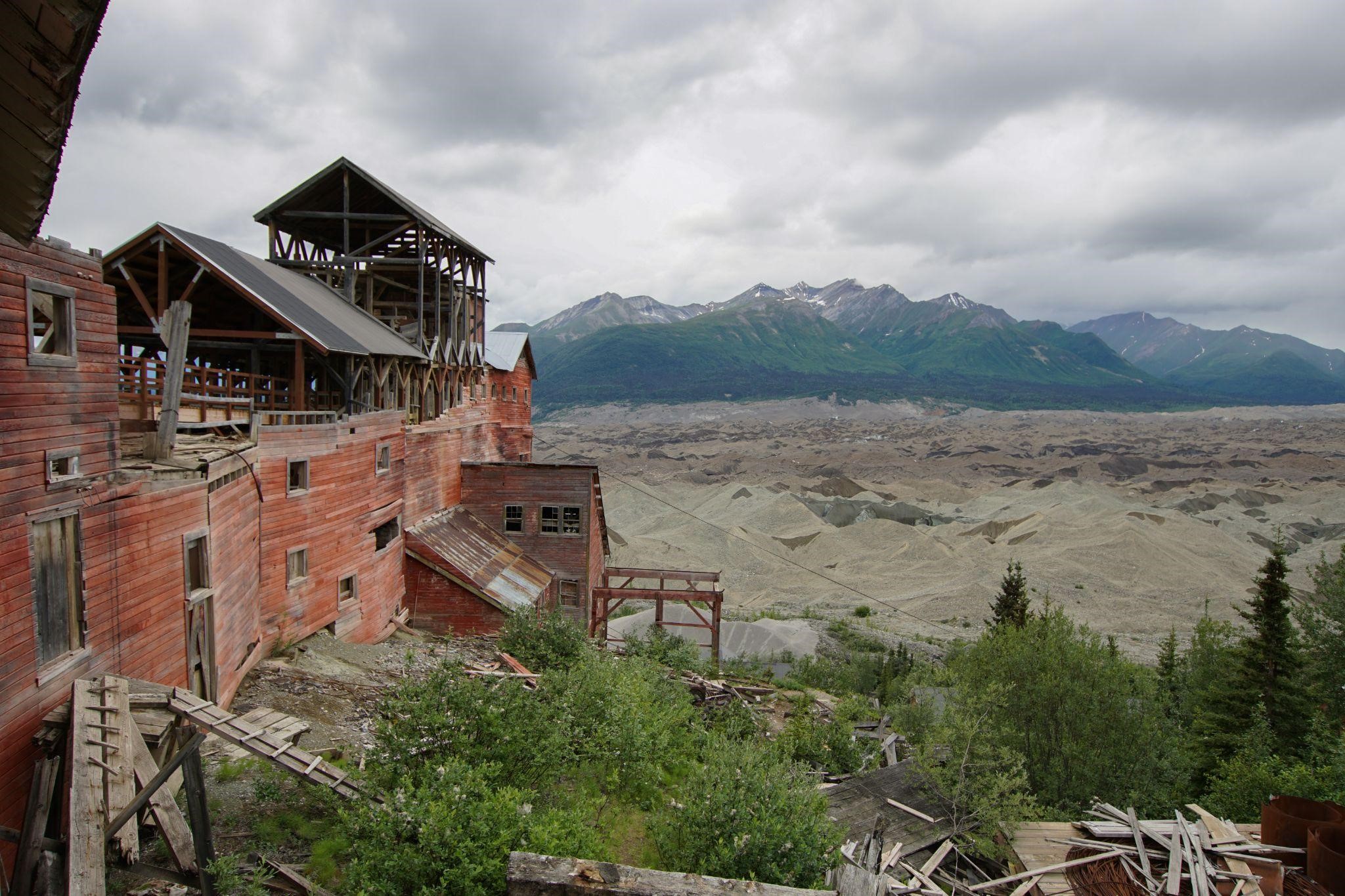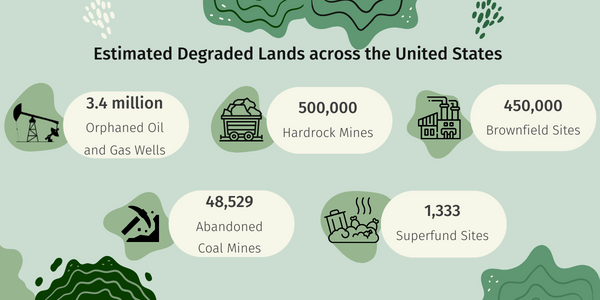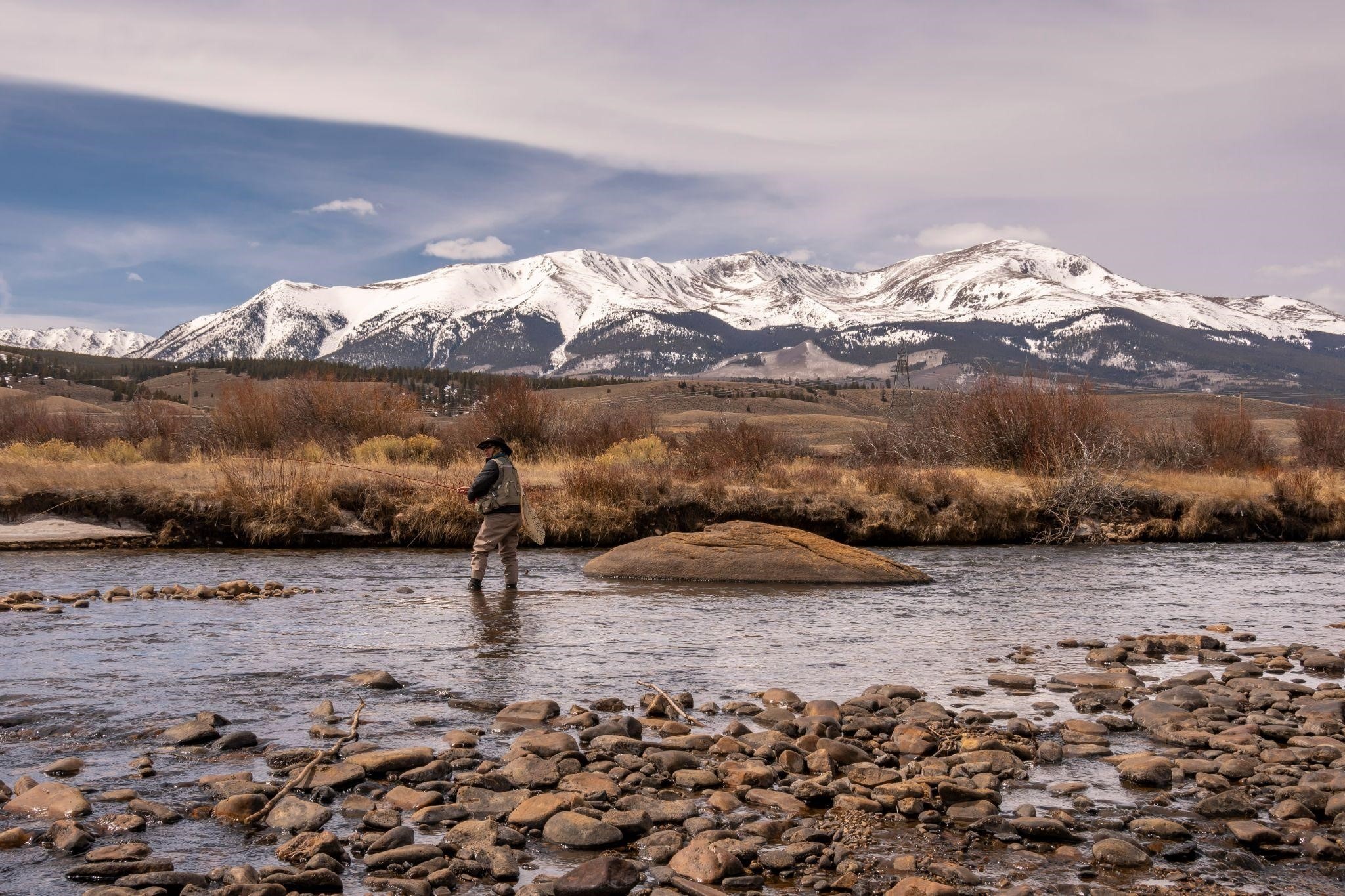We have much more to do and your continued support is needed now more than ever.
Why Cleaning Up Our Degraded Lands—All 4 Million of Them—Is a Climate Solution

What if I told you we have an opportunity to help fight climate change sitting right under our noses? Depending on where you live, you’ve probably driven past a deserted industrial complex, an abandoned oil field, a neglected landfill, or an old mine. These are what we call degraded lands and collectively, there are over 4 million of them across the United States. Extractive activities like oil and gas production and hardrock mining tend to be destructive processes that leave land degraded and wildlife and people at risk. In fact, you may be one of 9 million Americans who live within a mile of an orphaned well. Cleaning up and restoring these lands is an often-overlooked strategy to reducing avoidable emissions, capturing and storing more carbon, protecting green space, and revitalizing disenfranchised communities.
How many degraded lands are there?
Degraded land describes land that has lost some measure of its natural productivity from human activities. This includes land that has supported extractive industry such as abandoned mine lands and orphaned oil and gas wells, and land that pose hazards to people and wildlife due to contamination, such as brownfields and Superfund sites. But how many are there?

Climate, community, and economic benefits
Investment in degraded lands reclamation is an integral part of the climate solution and one with many co-benefits in addition to carbon sequestration. Degraded lands are more vulnerable to erosion, weathering, leaching, decomposition, and dangerous combustion, and therefore release carbon dioxide, methane, and other hazardous gasses. With proper management, these lands have the potential to sequester millions of tons of carbon dioxide annually as new and restored forests, grasslands, shrublands, and soils. In fact, sources say that for every $1 invested in land restoration, anywhere from $7 to $30 dollars can be returned in the form of improved food production, water quality, and carbon sequestration.
These degraded lands also come with a cost that falls heavily on frontline communities and wildlife. Clean air and water are compromised, and the carbon sequestration potential of these degraded lands is often rendered obsolete. Reclaiming and restoring degraded lands is crucial to improve human and ecological health and help tackle climate change. Reducing dependence on fossil fuels while enhancing carbon storage in forests, wetlands, grasslands, and other nature-based solutions is essential to effectively address the climate crisis and increase climate stability across the globe.
While investments in degraded land reclamation can help mitigate serious environmental damage, remove costly threats to public health, and store carbon, they also have clear economic benefits. An analysis from the Ohio River Valley Institute found that cleaning up half of the remaining abandoned mine land damage in 10 years (a $1.3 billion per year investment) would support more than 17,000 jobs, both direct (jobs to reclaim the mine lands) and indirect (such as administration jobs).

Key principles for climate-informed reclamation
Reclaiming and restoring degraded land can look different depending on the area and the goal for the reclaimed land. Climate-informed principles can help policymakers, community leaders, local and state government, and natural resource technicians strategize the best process and use of their project sites.
For example, tree planting can help store carbon and can help us meet climate goals when implemented properly and with careful monitoring. Planting native grasses where trees are not native or are difficult to grow can stabilize soils, store carbon, and begin to rebuild organic matter in the soil which supports future biodiversity. Redeveloping brownfields and Superfund sites can save green space, reduce urban sprawl, and aid in smart growth. Additionally, reclamation priorities and plans should always be created with the input of local communities, especially frontline and fenceline communities already coping with high pollution burden and increased climate vulnerability, to ensure that they reap the needed benefits of such an investment. Robust and meaningful community engagement will help ensure reclamation efforts deliver longer-term economic development in some of the most climate-, energy-, and economically-distressed regions.
Following these principles can help ensure degraded lands are reclaimed in a way that benefits the environment and communities long-term. However, every degraded land site has a different set of challenges and environmental and social impacts and requires individual assessment and monitoring as detailed in our new report on the Climate Benefits of Degraded Lands Reclamation and Restoration.

Investments in our Future
Recently, there has been significant federal investment in the reclamation of degraded lands included in the Bipartisan Infrastructure Law. This law allocates $21 billion to reclamation efforts with funding falling into four major programs: $11.3 billion for abandoned mine land reclamation; $4.7 billion for orphan oil & gas well plugging, remediation, and restoration; $3.5 billion for Superfund site cleanup; and $1.5 billion for brownfield remediation and revitalization. And the Inflation Reduction Act, signed into law in August 2022, reinstates the Superfund tax on oil and petroleum companies, which will provide additional funding to the EPA for Superfund cleanup.
This historic funding brings us one step closer to cleaning up harmful polluted sites and creating opportunities on that land in the form of natural restoration and carbon sequestration, renewable energy, housing, or recreational projects that can positively impact people and wildlife.
The scope of America’s degraded lands problem is vast, but so is the opportunity–to create new and restored forests and grasslands to sequester carbon, revitalize local economies, and remove ongoing threats to people and wildlife.
Learn more
To learn more, read our report recognizing the myriad of environmental and health issues associated with degraded lands and highlighting current information about the climate benefits of reclamation and related investments.





















